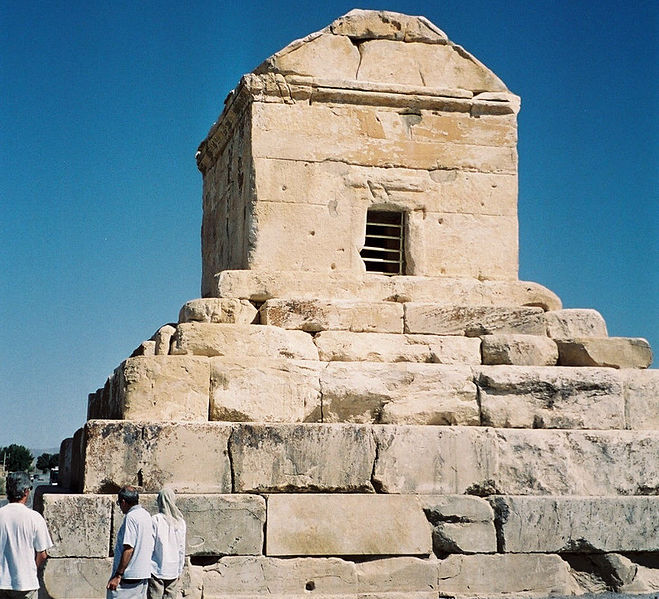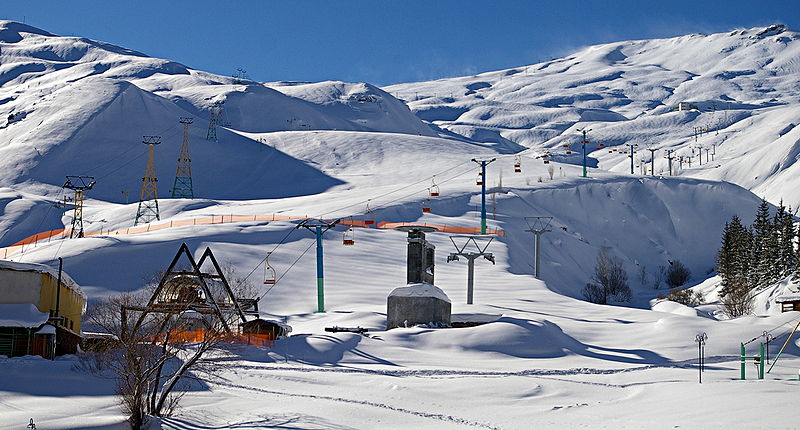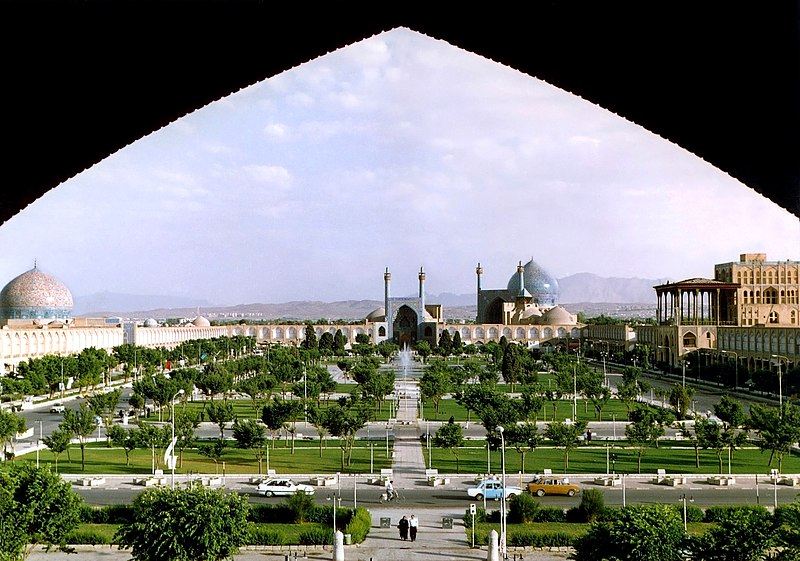Post by Caliph on Jan 22, 2015 2:01:42 GMT
Although tourism declined significantly during the war with Iraq, it has subsequently recovered. About 1,659,000 foreign tourists visited Iran in 2004 and 2.3 million in 2009 mostly from Asian countries, including the republics of Central Asia, while about 10% came from the European Union and North America.
The most popular tourist destinations are Isfahan, Mashhad and Shiraz. In the early 2000s the industry faced serious limitations in infrastructure, communications, industry standards and personnel training. The majority of the 300,000 tourist visas granted in 2003 were obtained by Asian Muslims, who presumably intended to visit important pilgrimage sites in Mashhad and Qom. Several organized tours from Germany, France and other European countries come to Iran annually to visit archaeological sites and monuments. In 2003 Iran ranked 68th in tourism revenues worldwide.According to UNESCO and the deputy head of research for Iran Travel and Tourism Organization (ITTO), Iran is rated among the "10 most touristic countries in the world".Domestic tourism in Iran is one of the largest in the world. Weak advertising, unstable regional conditions, a poor public image in some parts of the world, and absence of efficient planning schemes in the tourism sector have all hindered the growth of tourism.
From 2004, the country experienced a 100-percent growth in foreign tourist arrivals until mid-2008 when the number of foreign arrivals surged up to 2.5 million. Specially, there has been an enormous increase in the number of German tourists traveling to Iran in 2008.
The World Travel and Tourism Council claims that business and personal tourism rose by 11.3% and 4.6%, respectively, in real terms in 2007, with the growth in personal tourism only modestly below that of the preceding year.
In 2011, most of Iran’s international visitors arrived in Iran solely for the purpose of leisure travel. Leisure tourists arriving from abroad are also often relatives of Iranian citizens or expatriates residing outside of Iran returning to visit. Another key segment of international arrival traffic are pilgrims come to pay a visit to one of the many holy sites scattered throughout the country.
The number of international arrivals has been steadily increasing, up from 2.2 million people in 2009 to 3.6 million in 2011, with per capita spending of $1,850 per visit on average.
In general, Iran has tried to improve its complex and time-consuming visa application process and has begun to issue week-long visas for the nationals of 68 countries at airports. An online hotel reservation system has been developed. Iran will equip all airports with electronic visa facilities by February 2009 to issue online entry permits to foreign nationals. Visas can now be secured electronically and be collected from Iranian consulates or international airports. Iran has 15 road border crossings connecting it with Iraq, Turkey, Afghanistan, Pakistan, Turkmenistan, Armenia and Azerbaijan. Rail lines from Turkey and Turkmenistan can also be used to enter Iran. About 70% of visitors arrived by land in 2002, about 29% by air and less than 1% by sea. The price of internal flights is heavily subsidised, deterring competition and hampering profitability. In April 2005 the Imam Khomeini International Airport was reopened under the management of a consortium of four local airlines—Mahan Air, Aseman, Caspian Air and Kish Air—although no formal contract appeared to have been awarded
Iran's Cultural Heritage, Tourism and Handicrafts Organization is responsible for the establishment, development and operation of tourism facilities in Iran, planning for the repair or extension of tourism facilities through direct investment or providing loans to the private sector or entering into partnership with the private sector, issuing licenses and supervising the establishment and administration of hotels and restaurants and travel agencies and qualification and rating of these units. Investment in Iran's free trade zones are exempt from taxes for up to 20 years.
Area considered for further expansion in the tourism sector in Iran are eco tourism, coastlines, restoration of historical relics, handicraft townships, and health tourism (e.g. water therapy). 30,000 people come to Iran each year to receive medical treatment (2012).
Beach front on Kish Island

Abbasi Hotel in Isfahan

Cyrus' tomb lies in Pasargadae, a UNESCO World Heritage Site

Dizin ski resort near Tehran.

Isfahan

The most popular tourist destinations are Isfahan, Mashhad and Shiraz. In the early 2000s the industry faced serious limitations in infrastructure, communications, industry standards and personnel training. The majority of the 300,000 tourist visas granted in 2003 were obtained by Asian Muslims, who presumably intended to visit important pilgrimage sites in Mashhad and Qom. Several organized tours from Germany, France and other European countries come to Iran annually to visit archaeological sites and monuments. In 2003 Iran ranked 68th in tourism revenues worldwide.According to UNESCO and the deputy head of research for Iran Travel and Tourism Organization (ITTO), Iran is rated among the "10 most touristic countries in the world".Domestic tourism in Iran is one of the largest in the world. Weak advertising, unstable regional conditions, a poor public image in some parts of the world, and absence of efficient planning schemes in the tourism sector have all hindered the growth of tourism.
From 2004, the country experienced a 100-percent growth in foreign tourist arrivals until mid-2008 when the number of foreign arrivals surged up to 2.5 million. Specially, there has been an enormous increase in the number of German tourists traveling to Iran in 2008.
The World Travel and Tourism Council claims that business and personal tourism rose by 11.3% and 4.6%, respectively, in real terms in 2007, with the growth in personal tourism only modestly below that of the preceding year.
In 2011, most of Iran’s international visitors arrived in Iran solely for the purpose of leisure travel. Leisure tourists arriving from abroad are also often relatives of Iranian citizens or expatriates residing outside of Iran returning to visit. Another key segment of international arrival traffic are pilgrims come to pay a visit to one of the many holy sites scattered throughout the country.
The number of international arrivals has been steadily increasing, up from 2.2 million people in 2009 to 3.6 million in 2011, with per capita spending of $1,850 per visit on average.
In general, Iran has tried to improve its complex and time-consuming visa application process and has begun to issue week-long visas for the nationals of 68 countries at airports. An online hotel reservation system has been developed. Iran will equip all airports with electronic visa facilities by February 2009 to issue online entry permits to foreign nationals. Visas can now be secured electronically and be collected from Iranian consulates or international airports. Iran has 15 road border crossings connecting it with Iraq, Turkey, Afghanistan, Pakistan, Turkmenistan, Armenia and Azerbaijan. Rail lines from Turkey and Turkmenistan can also be used to enter Iran. About 70% of visitors arrived by land in 2002, about 29% by air and less than 1% by sea. The price of internal flights is heavily subsidised, deterring competition and hampering profitability. In April 2005 the Imam Khomeini International Airport was reopened under the management of a consortium of four local airlines—Mahan Air, Aseman, Caspian Air and Kish Air—although no formal contract appeared to have been awarded
Iran's Cultural Heritage, Tourism and Handicrafts Organization is responsible for the establishment, development and operation of tourism facilities in Iran, planning for the repair or extension of tourism facilities through direct investment or providing loans to the private sector or entering into partnership with the private sector, issuing licenses and supervising the establishment and administration of hotels and restaurants and travel agencies and qualification and rating of these units. Investment in Iran's free trade zones are exempt from taxes for up to 20 years.
Area considered for further expansion in the tourism sector in Iran are eco tourism, coastlines, restoration of historical relics, handicraft townships, and health tourism (e.g. water therapy). 30,000 people come to Iran each year to receive medical treatment (2012).
Beach front on Kish Island

Abbasi Hotel in Isfahan

Cyrus' tomb lies in Pasargadae, a UNESCO World Heritage Site

Dizin ski resort near Tehran.

Isfahan





 Happy Nowrooz
Happy Nowrooz



